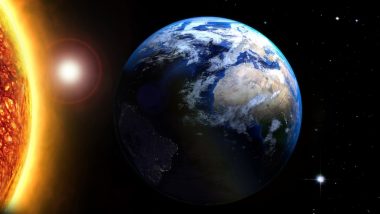In early January Earth comes closest to the sun than any other time of the year. Known as perihelion, during this period, the Earth is 91.4 million miles from the sun which is 2 percent closer than otherwise. On January 2nd Earth was close and on January 3rd, 2019 too Earth will be the closest to the Sun. The change in the distance of the Earth is because of the tilt in the Earth's axis. The Earth's orbit is not a perfect circle, but elliptical. At 05:20 GMT on January, 3 the Earth came 147,099,761km closer to the Sun.
Six months from now, the Earth will reach a point called aphelion when it will be 94.5 million miles away from the Sun. Then the distance will be 152,104,285km making us 5kms closer to the Sun when compared to other times. This change in season is not affected by this as it does not follow this orbital pattern and follow the Earth's tilt. Super Blood Wolf Moon Eclipse on January 20, 2019: Know What is Total Lunar Eclipse and Why is it Called Wolf Moon.
While our planet is close to the Sun at any point in the given time, the northern hemisphere remains a little far. While the Earth was its greatest distance from the Sun, in July 2018, the planet was witnessing record-breaking temperatures. The change in distance between the Earth and the Sun does not affect the seasons or temperatures witnessed in a particular region.
The Perihelion and Aphelion do not affect the season or temperature due to the change in distance between Earth and the Sun. When the Earth is close to Sun it is winter in India and many other countries in the Northern Hemisphere. But for those located in the Southern Hemisphere, it is summer.
(The above story first appeared on LatestLY on Jan 03, 2019 09:25 AM IST. For more news and updates on politics, world, sports, entertainment and lifestyle, log on to our website latestly.com).













 Quickly
Quickly


